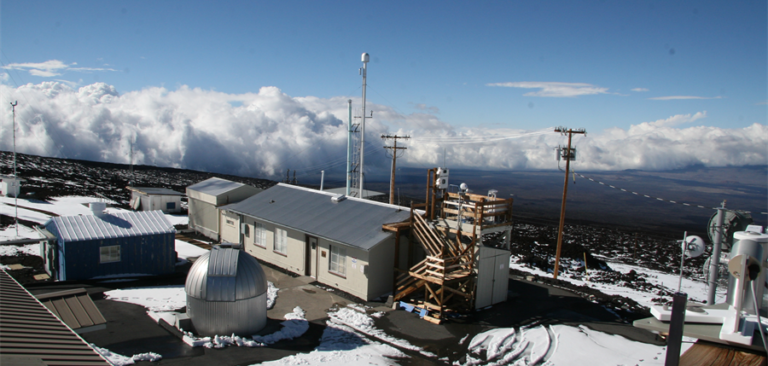The US National Oceanic and Atmospheric Administration’s (NOAA) Mauna Loa Atmospheric Baseline Observatory is set to undergo a major renovation and upgrade once road access is restored following the eruption of the Mauna Loa volcano.
The redevelopment project will modernize the site’s aging infrastructure and renovate the historic Keeling building. Plans call for increased solar generation and installation of a battery power backup system to make the observatory more energy efficient and resilient to future natural disasters. The project will increase the observatory’s scientific capabilities and create new opportunities for research collaboration.
Ariel Stein, acting director of NOAA’s Global Monitoring Laboratory, said, “Mauna Loa is a premier international research facility. This project will honor our history as we upgrade our scientific facilities, make them energy-efficient and generate power on-site to reduce the risk of disruption. This will provide a more productive and effective research campus for NOAA and our scientific partners for decades to come.”
The observatory is the benchmark sampling site for monitoring global climate change and is located at an elevation of 3,395m on the north flank of the Mauna Loa volcano on Hawaii’s Big Island. The facility has operated since 1957 and consists of more than a dozen small research buildings across a 3.2ha campus. Charles David Keeling of the Scripps Institution of Oceanography initiated carbon dioxide measurements at the site in 1958. NOAA’s carbon dioxide measurements began in 1974.
Mauna Loa is one of four baseline observatories stretching from the Arctic village of Utqiagvik, Alaska, to the South Pole, which form the foundation of NOAA’s global network of atmospheric observation sites. Data is carefully analyzed and compiled in archives like the Global Greenhouse Gas Reference Network, and made available to scientists worldwide.
Elements of the renovation project include refurbishing the Keeling building; adding a new staff office area; updating the site’s workshop and staging area; and dedicating more space for cooperative research near the base of a new 40m-tall sampling tower. The latter will replace an on-site, aging 37m sampling tower. Building designs will maximize rooftop solar energy generation. A new site-wide power and grounding distribution system will be installed, along with fiber-optic infrastructure. Obsolete facilities will be removed.
Observatory operations are currently curtailed by fresh lava flows from Mauna Loa’s November 2022 volcanic eruption, which buried about 1,823m of the access road and electric poles under as much as 9m of lava. Although the facility lost power, the campus itself was not threatened. It will be several months before the lava is cool enough for engineers to re-establish the roadway.
To maintain the continuity of long-term observations, NOAA contracted with a local helicopter company, Paradise Helicopters, which began weekly flights to the site on December 21, 2022, to collect air samples via a portable, battery-powered flask system. The flask samples are then shipped to and analyzed at NOAA’s Global Monitoring Laboratory in Boulder, Colorado. In January 2023, a battery storage system was delivered by helicopter and will be linked to existing solar panels to allow for the restart of some of the facility’s important sampling instrumentation.
NOAA and the Scripps Institution of Oceanography, which make independent, complementary on-site measurements at the Mauna Loa Observatory, are currently taking daily greenhouse gas measurements from a temporary location at the University of Hawaii astronomical observatory on Maunakea.
The timeline for renovation and facility upgrades will depend on when access to the road leading to the Mauna Loa facility is restored.



